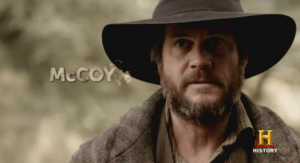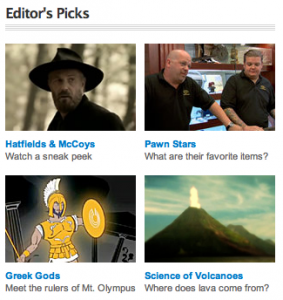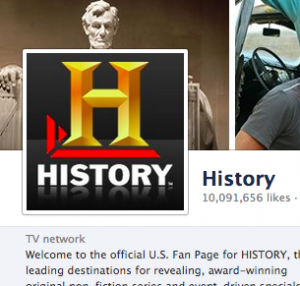Brands
History Lessons: Mining the Past for Compelling Content
This post is part of the Branded Blogging Series, which features tips on how to learn from the successes of some of the most innovative and successful brand blogs.

Mummies, Nazis and Ancient Aliens. History has it all.
The enterprise, formerly known as The History Channel, has incorporated its massive catalog of historical content and popular reality shows into one heck of a brand, but its reach online through its website History.com and various social media outlets is particularly impressive.
Here’s a look at its marketing strategy:
Cross-branding

One can’t watch the network without being prompted to check out an array of other content vehicles, offering more free programing or other products that charge a premium.
Online, History.com is one-stop shop for all things History. Network producers direct viewers to the web every chance they get, often showing deleted scenes, exclusive interviews with their stars and interactive graphics. While navigating the site, the user is fed a steady barrage of even more content promotion back on the network.
The resulting self-sustaining History ecosystem generates a ton traffic and in return advertising dollars; however, there’s more monetizing where that came from. On all its channels, the company also heavily promotes its line of documentaries and video games on sale from the web site.
All social, all the time
The History brand is all over the usual social media players.
Facebook has a cool timeline which seems to be made for a brand such as theirs. However, it’s a little unsatisfying to see how limited it is compared to the real timelines it presents – going beyond the birth of Facebook to the birth of civilization.
With Twitter, it tweets regularly, updating its 240,000 followers on what shows are coming up, encouraging retweets and sending out fun facts like a “This Day in History” nugget.
 For its many niche products, such as Pawn Stars, fans of the television program are fully engaged, tweeting along with the show in their own quests for abandoned treasure.
For its many niche products, such as Pawn Stars, fans of the television program are fully engaged, tweeting along with the show in their own quests for abandoned treasure.
Google+ is more reactive with content like “If you missed last night’s Axe Men, watch it here.” It’s more targeted for casual fans with interesting news alerts called “History in the Headlines” sprinkled in. One recent alert was an article about how early Mayan calendars debunked the Mayan prophecy that the world will end in 2012.
Foursquare is probably History’s most innovative service from a user-engagement standpoint. The Foursquare site gives history buffs a chance to “unlock the history badge” as users check in to different historical sites. From there, History will send them fresh content based on that particular location.
Relevance
As the brand blends historical facts, news and entertainment, all the content needs to be judged with a skeptical eye. History is a for-profit entity owned through a joint venture between media conglomerates Hearst, Disney and Comcast.
They don’t just teach history, they also make it. The company has a team of archivists, historians and lawyers who seek, acquire and present historical documents.
This is extreme history and for many it’s extremely compelling — and sometimes controversial — kind of a Discovery Channel meets the Smithsonian Institute.
Image by FlickrGet better at your job right now.
Read our monthly newsletter to master content marketing. It’s made for marketers, creators, and everyone in between.




